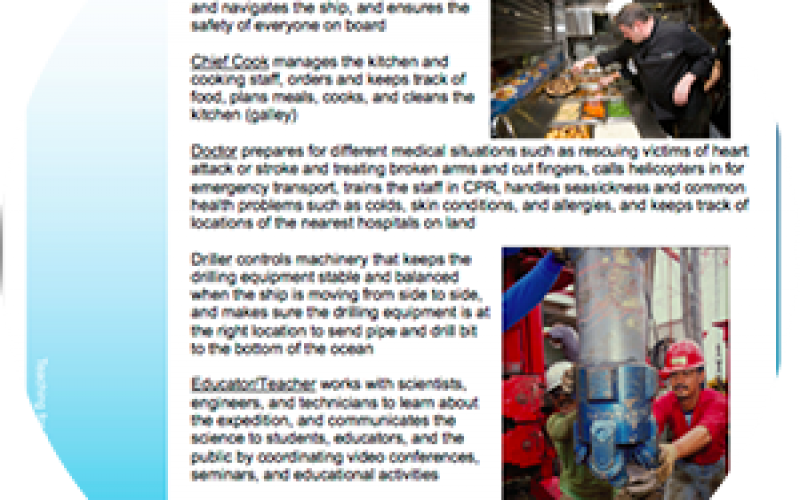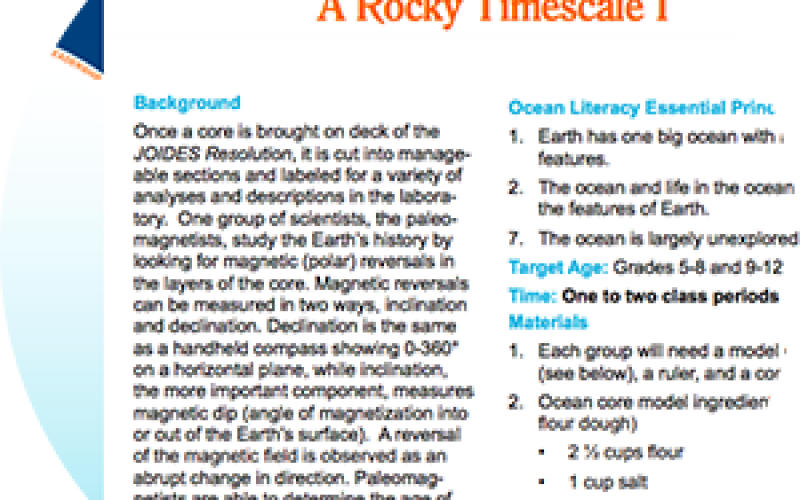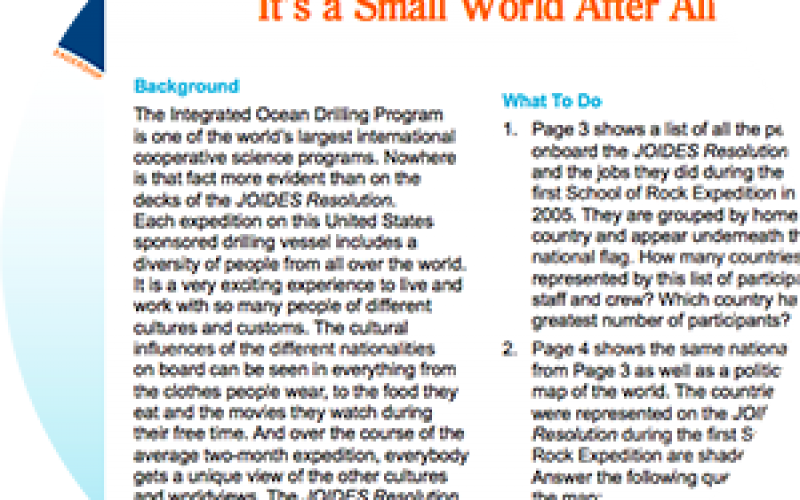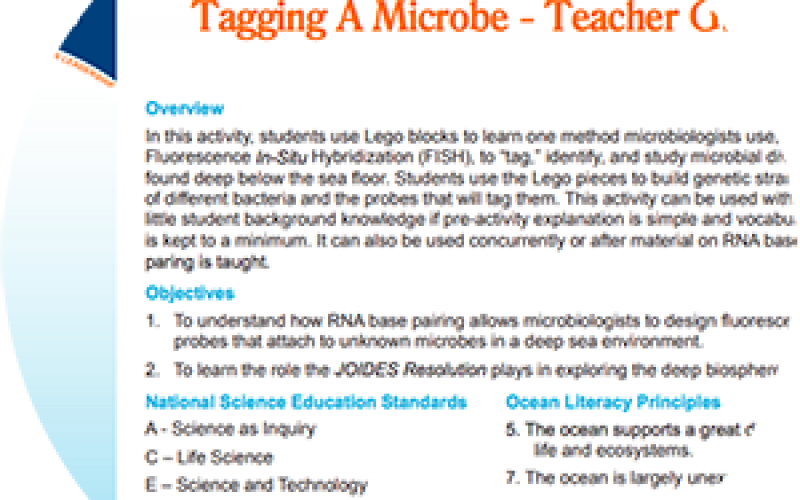In this activity students explore the diversity of careers aboard an ocean research vessel called the JOIDES Resolution to learn how the skills and expertise of each individual and the teamwork of the group are essential to the success of the science. Students read brief descriptions about the many jobs represented on the ship, then choose one job of interest.
Once a core is brought on deck of the JOIDES Resolution, it is cut into manageable sections and labeled for a variety of analyses and descriptions in the laboratory. One group of scientists, the paleomagnetists, study the Earth’s history by looking for magnetic (polar) reversals in the layers of the core. Magnetic reversals can be measured in two ways, inclination and declination.
The Integrated Ocean Drilling Program is one of the world’s largest international cooperative science programs. Nowhere is that fact more evident than on the decks of the JOIDES Resolution. Each expedition on this United States sponsored drilling vessel includes a diversity of people from all over the world.
In this activity, students use Lego blocks to learn one method microbiologists use, called Fluorescence In-Situ Hybridization (FISH), to “tag,” identify, and study microbial diversity found deep below the sea floor. Students use the Lego pieces to build genetic strands of different bacteria and the probes that will tag them.



